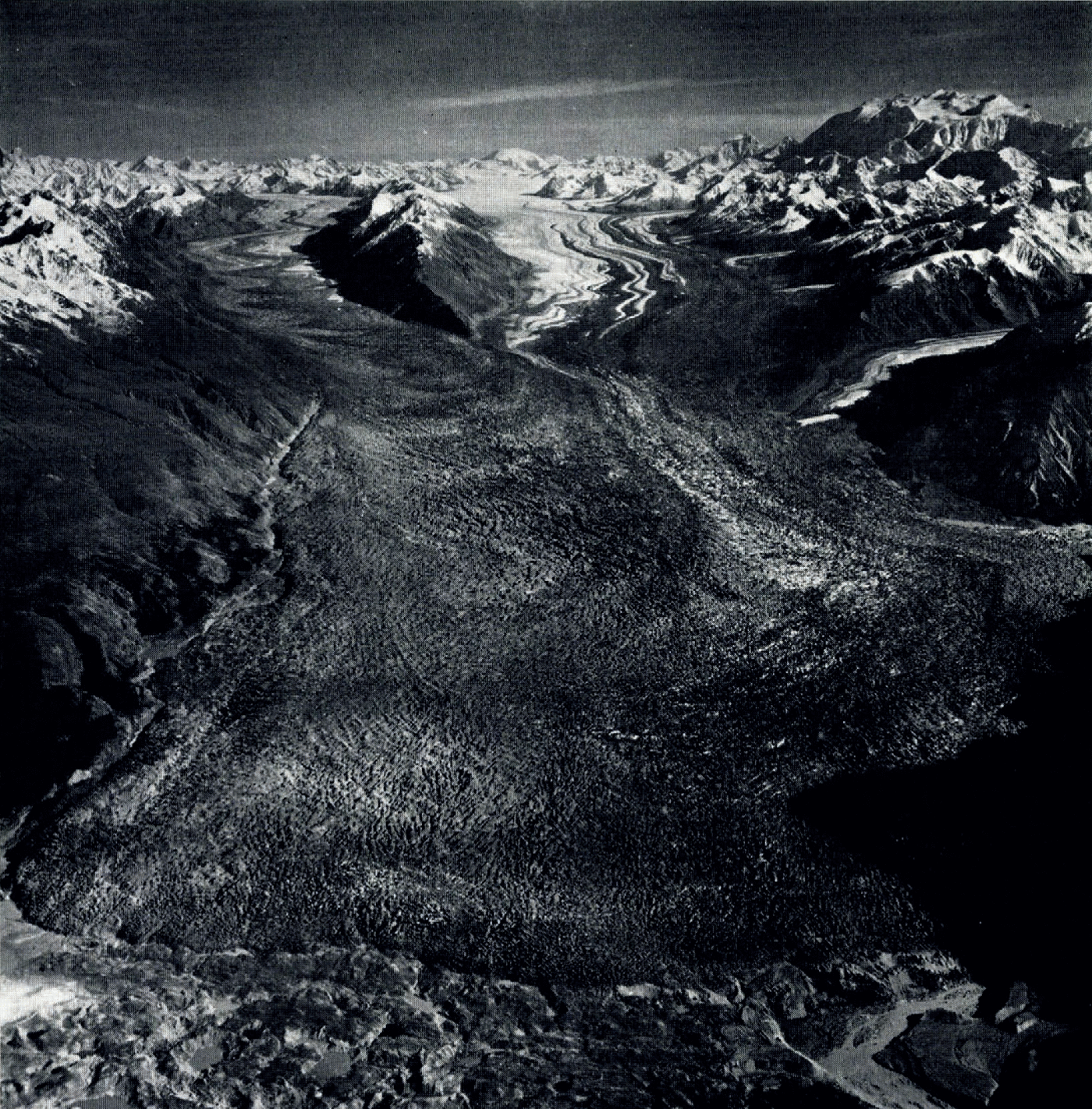Sir,
Walsh Glacier (Canada and Alaska) was observed making a remarkable surge between 1961 and 1965, a maximum movement of about 10,050 m. occurring during that interval (Reference PostPost, 1966). Oblique aerial photographs of the glacier taken in 1966 show that the surge has continued, the greatest changes being recorded in the terminal region. A maximum movement of about 4,000 m. occurred in the narrow, lower part of the Walsh Valley between 23 August 1965 and 17 September 1966. The influx of Walsh Glacier ice has completely transformed Logan Glacier below the point where Walsh Glacier joins. Virtually stagnant ice, largely derived from Logan Glacier, is now completely invaded and activated by ice from Walsh lacier, and the terminus of Logan Glacier has been thrust ahead as much as 1,500 m. (Fig. 1).

Fig. 1. Walsh Glacier (left) and Logan Glacier (center), 17 September 1966 The surge of Walsh Glacier, which in August 1963 had just reached the point where the glaciers join, has now completely dominated lower Logan Glacier. Formerly, ice below the junction was virtually stagnant and the positions of the medial moraines indicated that Walsh Glacier had furnished only about one-quarter of the ice in the lower valley. The stagnant, moraine-covered ice in the foreground, now being over-ridden by the advancing ice from Walsh Glacier, is a part of Chitina Glacier which flows in from the lower left.
(Photograph by Austin Post, U.S. Geological Survey)
Ice movement farther up Walsh Glacier has been much less than in the lower valley during the past year. In the vicinity of the first tributary (Reference PostPost, 1966, fig. 1, table 1) surface features were displaced down-valley about 2,100 m.; near Gadorna Glacier the movement was approximately 1,500 m. The reduced rate of flow in the upper part of the valley is considered evidence that the surge is about over. This surge is unusual both in the maximum movement recorded (about 11,500 m.) and in the period of time during which the surge has been in progress (more than 4 years). The former position of the Logan Glacier medial moraines indicates that no former surge of Walsh Glacier of this magnitude has occurred in the past too years or more.
Increased activity of at least three other glaciers in the vicinity of Walsh Glacier in 1966 may be evidence of new surges developing. These are: (1) Baldwin Glacier; (2) the first tributary of Logan Glacier east of Baldwin Glacier; (3) the next valley glacier west of Baldwin Glacier. The last-mentioned glacier had started to advance slightly in 1966. There was also evidence (in the form of increased marginal crevassing) that the large Anderson Glacier, the major source of ice for Chitina Glacier, is now moving more rapidly than in 1960. Unstable conditions in the Chitina Glacier system, similar to those of Muldrow Glacier prior to its surge (Reference PostPost, 1960), and Steele Glacier, which surged in 1965–66, suggest that a large-scale glacier surge may occur in these glaciers in the next few years.



